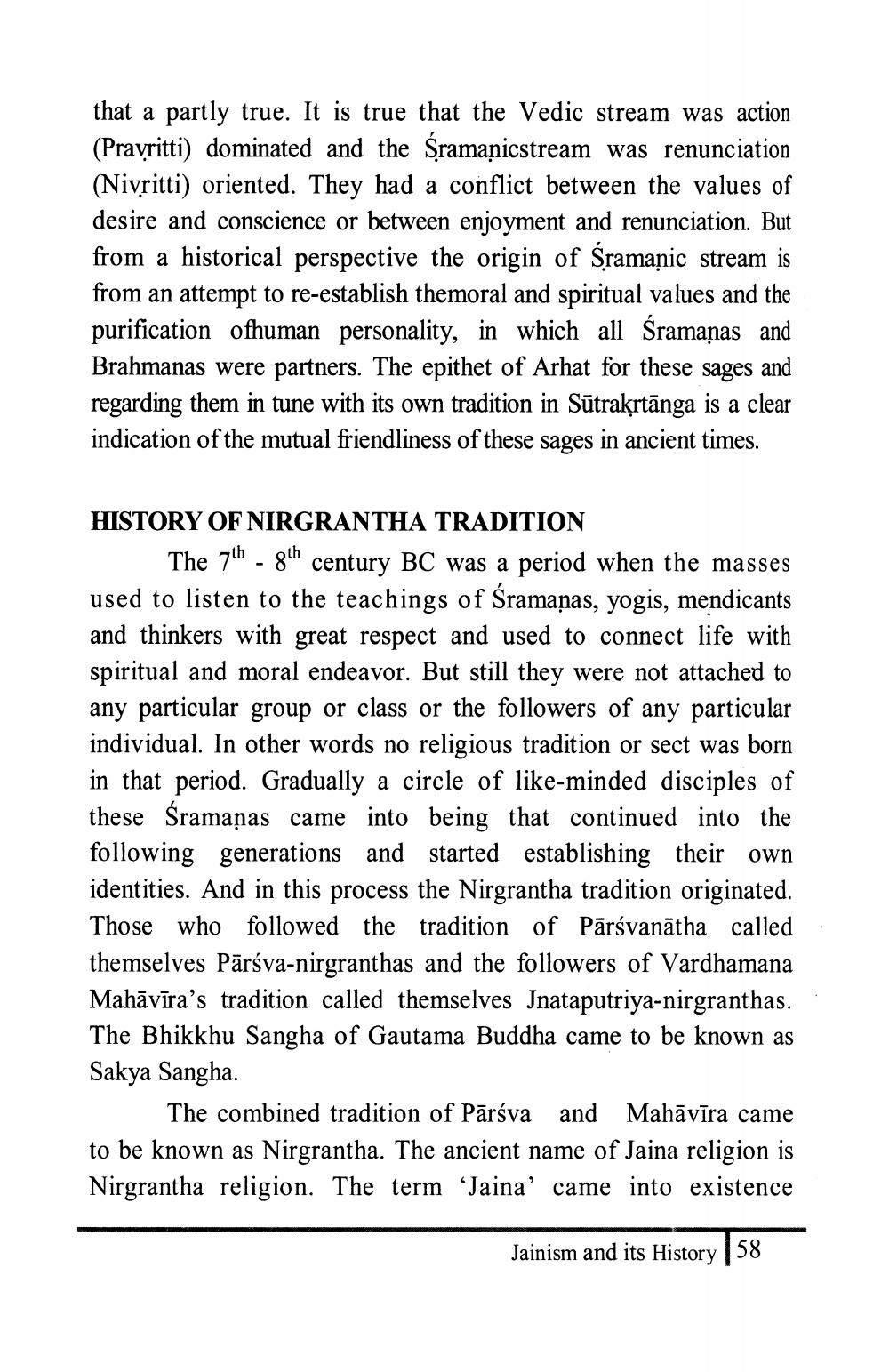________________
that a partly true. It is true that the Vedic stream was action (Pravritti) dominated and the Sramaņicstream was renunciation (Nivritti) oriented. They had a conflict between the values of desire and conscience or between enjoyment and renunciation. But from a historical perspective the origin of Sramanic stream is from an attempt to re-establish themoral and spiritual values and the purification ofhuman personality, in which all Sramanas and Brahmanas were partners. The epithet of Arhat for these sages and regarding them in tune with its own tradition in Sūtrakrtānga is a clear indication of the mutual friendliness of these sages in ancient times.
HISTORY OF NIRGRANTHA TRADITION
The 7th-8th century BC was a period when the masses used to listen to the teachings of śramaņas, yogis, mendicants and thinkers with great respect and used to connect life with spiritual and moral endeavor. But still they were not attached to any particular group or class or the followers of any particular individual. In other words no religious tradition or sect was born in that period. Gradually a circle of like-minded disciples of these Śramaņas came into being that continued into the following generations and started establishing their own identities. And in this process the Nirgrantha tradition originated. Those who followed the tradition of Pārsvanātha called themselves Pārsva-nirgranthas and the followers of Vardhamana Mahāvīra's tradition called themselves Jnataputriya-nirgranthas. The Bhikkhu Sangha of Gautama Buddha came to be known as Sakya Sangha.
The combined tradition of Pāráva and Mahāvīra came to be known as Nirgrantha. The ancient name of Jaina religion is Nirgrantha religion. The term “Jaina' came into existence
Jainism and its History | 58




